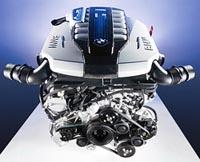Check these sites
It is really useful to the software professionals.http://exforsys.com/
The geekinterview.com is really useful for the job seekers.
http://geekinterview.com/
 Nanotechnology is a branch of science and engineering devoted to the design and production of extremely small electronic devices and circuits built from individual atoms and molecules. Manufactured products are made from atoms. The properties of those products depend on how those atoms are arranged. If we rearrange the atoms in coal we can make diamond. If we rearrange the atoms in sand (and add a few other trace elements) we can make computer chips. If we rearrange the atoms in dirt, water and air we can make potatoes. These trends we will have to develop a new manufacturing technology which will let us inexpensively build computer systems with mole quantities of logic elements that are molecular in both size and precision and are interconnected in complex and highly idiosyncratic patterns. Nanotechnology will let us do this. There are two more concepts commonly associated with nanotechnology:
Nanotechnology is a branch of science and engineering devoted to the design and production of extremely small electronic devices and circuits built from individual atoms and molecules. Manufactured products are made from atoms. The properties of those products depend on how those atoms are arranged. If we rearrange the atoms in coal we can make diamond. If we rearrange the atoms in sand (and add a few other trace elements) we can make computer chips. If we rearrange the atoms in dirt, water and air we can make potatoes. These trends we will have to develop a new manufacturing technology which will let us inexpensively build computer systems with mole quantities of logic elements that are molecular in both size and precision and are interconnected in complex and highly idiosyncratic patterns. Nanotechnology will let us do this. There are two more concepts commonly associated with nanotechnology:
Even including system overhead (power, connections, etc). the volume per element should still be less than 100 cubic nanometers. Operating continuously at a gigahertz such a computer would use less than 10^-9 watts.
Medical Applications:
Killing Cancer cells:
Given such molecular tools, we could design a small device able to identify and kill cancer cells. The device would have a small computer, several binding sites to determine the concentration of specific molecules, and a supply of some poison which could be selectively released and was able to kill a cell identified as cancerous.
Providing oxygen:
A second application would be to provide metabolic support in the event of impaired circulation. Poor blood flow, caused by a variety of conditions, can result in serious tissue damage. A major cause of tissue damage is inadequate oxygen. A simple method of improving the levels of available oxygen despite reduced blood flow would be to provide an "artificial red blood cell."
Artificial Mitochondria:
While providing oxygen to healthy tissue should maintain metabolism, tissues already suffering from ischemic injury (tissue injury caused by loss of blood flow) might no longer be able to properly metabolize oxygen. In particular, the mitochondria will, at some point, fail. Increased oxygen levels in the presence of nonfunctional or partially functional mitochondria will be ineffective in restoring the tissue. However, more direct metabolic support could be provided. The direct release of ATP, coupled with selective release or absorption of critical metabolites, should be effective in restoring cellular function even when mitochondrial function had been compromised.
The abilities discussed here might well take years or decades to develop.
sources:

 BMW's Hydrogen engine which uses liquid hydrogen as fuel. BMW’s mission over the past decade as it has pursued hydrogen cars and the performance to go with them.These hydrogen vehicles have improved over the years, making the most of renewable hydrogen fuel in their internal combustion powerplants.
BMW's Hydrogen engine which uses liquid hydrogen as fuel. BMW’s mission over the past decade as it has pursued hydrogen cars and the performance to go with them.These hydrogen vehicles have improved over the years, making the most of renewable hydrogen fuel in their internal combustion powerplants.